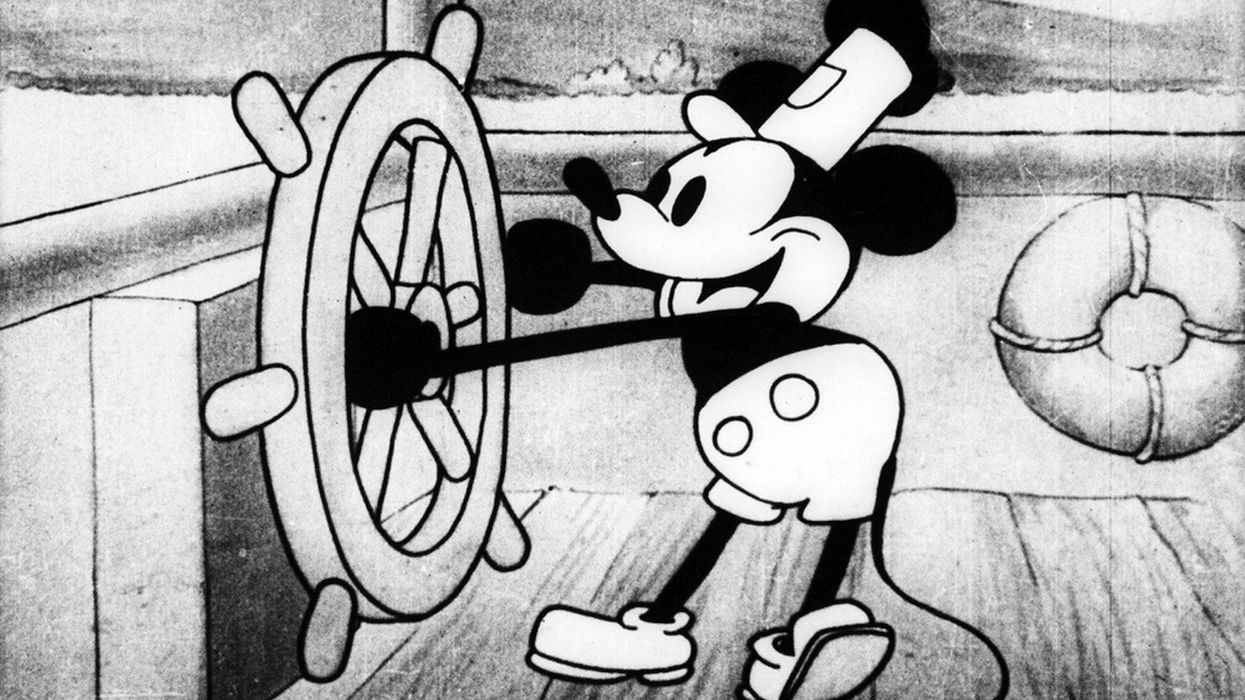Watch: What Mickey Mouse Has to Do with Copyright Law
Mickey Mouse is a walking battlefield for copyright protection.

When you create something, you like to think that it is yours, and that no one can take it from you. This idea begins in childhood, and it become no less fervent as one grows into adulthood. However, what you eventually realize is that ownership of creations begins with context. You only truly own something if you control all of the circumstances of production; sometimes, obtaining this control can become a battle. Believe it or not, as this video essay by The Mickey Mouse Collection shows, Mickey Mouse is and was a walking battlefield for copyright protection—in addition to being an American history textbook in miniature.
Simplicity sells...
One important lesson that any budding animator, illustrator, or general creative type might learn by looking at the earliest Mickey Mouse cartoons is that the simpler your idea, the longer it's likely to last. Mickey Mouse's memorable face is built out of three circles—two for the ears and one big one for the head—and his flexible, wildly waving and flip-flopping body is constructed from elongated shapes, the animators' term for which is "rubber hoses". The simplicity and malleability of Mickey Mouse as a figure made him fun to watch from his beginnings and perpetually interesting to work with for his animators.
"The legal protections of Mickey set a precedent for many subsequent changes to copyright laws."
...But watch the fine print
The story behind Mickey Mouse, though, is the story of conflict. As we all know, Walt Disney is the person who pushed Mickey into the American consciousness, but the seeds of his creation were planted when Disney and partner animator Ub Iwerks created a character called Oswald the Lucky Rabbit while under contract with Universal Studios. Unfortunately, because Universal owned the rights to the character, Disney's ambitions to make more and more short films with Oswald were cut short—and the studio actually wanted to pay Disney and Iwerks less money for their time. In the future, Disney protected the rights to his creations with an iron fist, and that protection started with Mickey, currently guarded by a vast iron wall of copyright laws in the event that anyone might want to reproduce his image. In fact, the legal protections of Mickey set a precedent for many subsequent changes to copyright laws, all geared towards creative autonomy, to the point where US Copyright Law is nicknamed the "Mickey Mouse Protection Law".
Be careful what you stand for
Mickey Mouse's path to an innocent, happy-go-lucky image has been a winding one. As the video indicates, his earliest incarnation, in the form of a character called Steamboat Willie, was an obnoxious trickster. And as time has passed, scholars have unearthed an unsettling array of similarities between Mickey and blackface performers, as seen most famously in Al Jolson's The Jazz Singer. In the gestures, the expressions, and the general mood, a disturbing heritage comes through. It would take generations for the figure's public image to become squeaky clean, and even then, he's only as squeaky clean as one's ignorance of his complicated backstory.
What commonly known characters or icons can you think of that have evolved over time? How completely have they evolved? Let us know in the comments.











